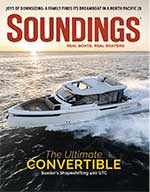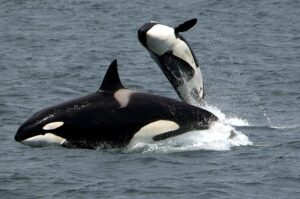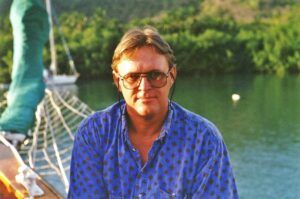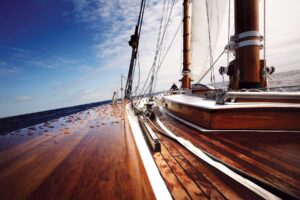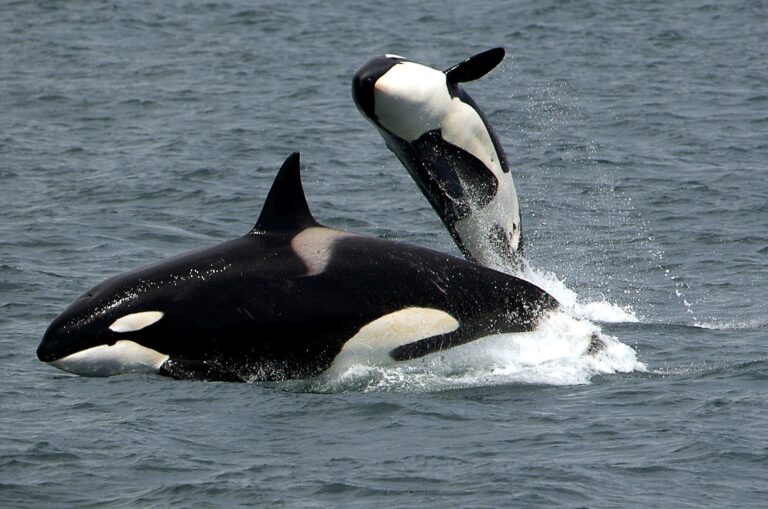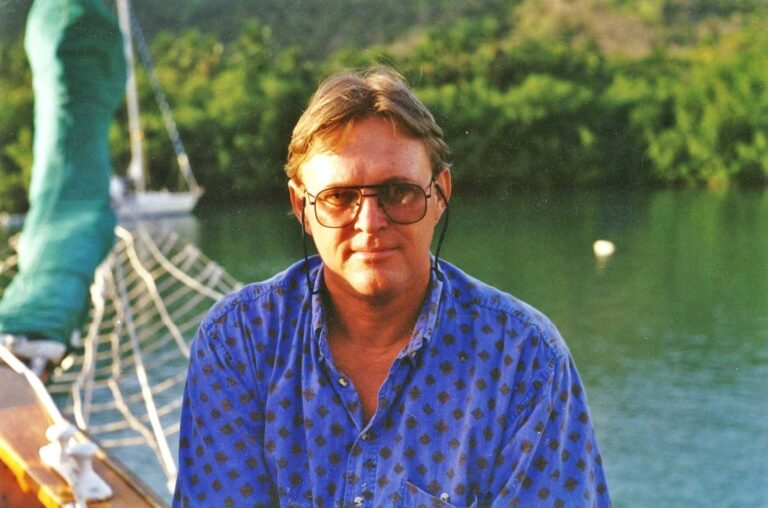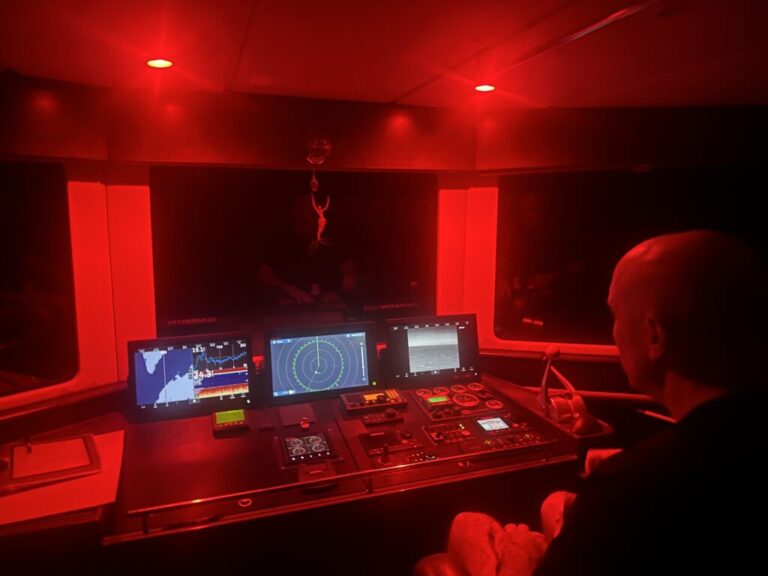She’s 10 feet, 6 inches with a 25-hp, 4-cylinder inboard engine and can go up to 50 mph. With no clutch, neutral or reverse, she likes the fast life – even at 61 years old.

{loadposition position10}
She goes by No. 38, a Danbury Racer speedboat that is John de Sousa’s pride and joy and one of only four remaining seaworthy vessels of her kind.
“This is a piece of Connecticut history that is very, very rare,” says de Sousa, of East Granby, Conn., and a member of the Baystate Woodies, a New England Chapter of the Antique and Classic Boat Society. “They were built around 1949 for one purpose – to race in the Danbury Fair in Connecticut.”
No. 38 got to run again with some old friends last spring. Fellow members Bo Muller, owner of Muller Boatworks of Sunapee, N.H., brought No. 24, and Robert Harrity, of New Haven, Conn., brought No. 26 to Southwick, Mass., for the Baystate Woodies’ annual spring gathering on May 1.

Although No. 38 could not get running that day because of carburetor problems, Nos. 24 and 26 got to race one another on Lake Congamond.
“It’s a thrill – you’re so close to the water that going 35 mph feels like 60,” says Harrity, who bought his in the early 1990s in Bridgeport, Conn. “The boat has a hard chine on it, so when you turn a corner it leans and slides.”
Harrity, 62, says that, with no neutral and no reverse, the boat launches forward the minute it’s engaged.
“You pretty much point the boat in the direction you want to go in and go, and the engine is sitting literally between your legs,” says Harrity, who keeps No. 26 at his summer home on Squam Lake, N.H.
Old race posters and race documents tell the story of 1950, when the horse track at the Danbury fairgrounds was flooded to create the Aquaway, the nation’s first landlocked, oval boat racing speedway.
Harold Kohler, the fair’s master carpenter, was commissioned to design and build these vessels. The exact number built is unknown because there is no official recorded history for the racers, but Baystate Woodies member Bob Comstock believes that 21 to 29 were built.
Each vessel was equipped with a tin block 44- or 48-cubic inch inboard Crosley engine that allowed the boats to reach speeds of more than 40 mph. Because of performance problems, many of the tin block engines were replaced with more durable iron block models. De Sousa says No. 38 is one of two made with a fiberglass hull – the other, he believes, was destroyed.
“There is a theory that [Kohler] probably didn’t build each vessel himself, but rather had some assembly line process,” Harrity says. “The numbers on the boats start in the teens because, in racing circles at the time, the single digits were reserved for the national champions.”
The track was a quarter-mile long, 30 feet wide and 3 feet deep, according to Comstock, who lives in Madison, Conn. The boats would only race for about a year or so to make way for stock car racing, which proved to be more financially sound, according to de Sousa. The Danbury Racers were stored indoors on the fairgrounds for 30 years, where fair employees regularly oiled them and maintained their engines. On July 30, 1980, 19 of the vessels were put up for auction in Danbury, Conn., and nine were sold for $2,500 apiece, according to de Sousa. Little seems to be known about what became of the other 10.
There was a brief reunion of five or six of the vessels in the mid-1980s on Lake George, N.Y., but this year was the first Danbury Racer reunion that the Woodies know of since that time, according to Muller.
“John was really the inspiration for this,” Harrity says. “He called us, and I remember getting into my car in Connecticut, driving to New Hampshire, getting the boat and then driving to the lake. It was a great day.”
De Sousa says he grew up watching and helping his father restore boats in New London, Conn.
“I was just a baby when he was building dinghies,” says de Sousa, 65.
A retired electrical engineer, he began to restore a 1956 Chris-Craft 17-foot Deluxe about 15 years ago.
“It was in good shape, but it needed a lot of cosmetic-type work,” de Sousa says. “I did a lot of varnishing, rechroming and reupholstering.”
However, de Sousa had a passion to find something truly rare – a Danbury Racer that still could cruise on the water. About four years ago, a salesman came to his business with equipment his company needed and saw pictures of antique boats on de Sousa’s wall. They started talking about them, and somehow the subject of the Danbury Racers came up.
“He said to me, ‘Hey, I used to have one of those. I sold it to a friend, but now he wants to sell it. You interested?’ ” de Sousa says. “It was pure luck. What were the chances this salesman passing through would know of where to get one?”
De Sousa traveled up to Naples, Maine, that spring and saw that No. 38 was in great shape, with a newly rebuilt original Crosley 4-cylinder iron block engine. De Sousa also owns one of the original Crosley tin block engines.
“I really only had to replace the wooden decks with new mahogany,” de Sousa says.
De Sousa says that although it occasionally has carburetion problems, he has powered it up to 50 mph.
Muller, 56, says he bought No. 24 from fellow Baystate Woodies member Lee Heinzman nine years ago as a project that he and his son Joe, then 14, could restore together.
“I call them a Tonka toy boat – they are so minuscule, like driving a go-kart on the water,” Muller says. “They are not a smooth, quiet ride, but they are a lot of fun.”
Muller says the track the boats raced on was so narrow that the hulls really took a beating. When Muller got No. 24, he and his son did significant outer restoration and replaced the original 1946 tin block engine with a 1949 iron block engine. He still has the tin block in storage because of its value and rarity.
“The boat is my son’s now,” Muller says. “At 22, he’s six-foot-five, so he has a little trouble getting into it, but he can still fit.”
At least 11 of the boats are thought to still exist, although Muller believes there are probably more.
“I’m sure they are tucked away in someone’s garage somewhere out there,” Muller says. “There’s one more we know that’s still running out in Wisconsin. It would be fun to get all four racing on the water together someday.”
For information about the Baystate Woodies, visit www.baystatewoodies.com.
This article originally appeared in the November 2010 issue.

